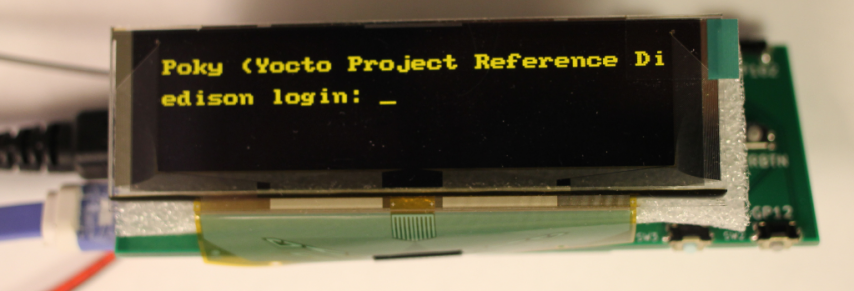Framebuffer Driver Module
Failed to load latest commit information. Mar 5, 2015 Jan 18, 2013 Nov 28, 2014 Nov 28, 2014 Jan 19, 2015 Nov 28, 2014 Aug 16, 2014 Aug 16, 2014 Aug 16, 2014 Aug 16, 2014 Aug 16, 2014 Aug 16, 2014 Aug 16, 2014 Aug 16, 2014 Dec 5, 2014 Dec 5, 2014 Aug 16, 2014 Aug 16, 2014 Aug 16, 2014 Aug 16, 2014 Aug 16, 2014 Aug 16, 2014 Aug 16, 2014 Aug 16, 2014 Aug 16, 2014 Aug 16, 2014 Aug 16, 2014 Nov 28, 2014 Aug 16, 2014 Aug 16, 2014 Aug 31, 2013 Dec 5, 2014 Sep 10, 2013 Nov 2, 2014 Aug 16, 2014 Dec 7, 2014 Aug 9, 2014. FBTFT ========= 2015-01-19 The FBTFT drivers are now in the Linux kernel staging tree: Development in this github repo has ceased.


This article includes a list of references, but its sources remain unclear because it has insufficient inline citations. Please help to improve this article. The Linux framebuffer. Memory containing a current video frame, and the Linux framebuffer means “access method to the. & KMS driver; DirectFB. To do so, you must add an options line, such as this: options sisfb mode=1280x1024 rate=75 This line specifies options for the sisfb module, which is the SiS framebuffer driver—that is, it handles text-based video modes for certain SiS video chipsets. (Framebuffer drivers can also be used by X via the X framebuffer driver,.
Linux Framebuffer drivers for small TFT LCD display modules. Elastik Sound Bank Crack. The module 'fbtft' makes writing drivers for some of these displays very easy.
Development is done on a Raspberry Pi running the Raspbian 'wheezy' distribution. INSTALLATION Download kernel sources From Linux 3.15 cd drivers/video/fbdev git clone Add to drivers/video/fbdev/Kconfig: source 'drivers/video/fbdev/fbtft/Kconfig' Add to drivers/video/fbdev/Makefile: obj-y += fbtft/ Before Linux 3.15 cd drivers/video git clone Add to drivers/video/Kconfig: source 'drivers/video/fbtft/Kconfig' Add to drivers/video/Makefile: obj-y += fbtft/ Enable driver(s) in menuconfig and build the kernel See wiki for more information: Source.
Adafruit/SainSmart 1.8' TFT LCD display for Raspberry Pi In 2012, I experimented with tiny 1.8' TFT LCD display modules from and as displays for the. After a good bit of Linux kernel hacking on a driver for the ST7735R LCD controller chip, I got them to run as as the Pi's console device. Update 2013: My early TFT driver work documented here has been mostly superseded by this newer driver: FAQ: Sorry, but I cannot provide prebuilt SD-card images. Video demos of the whole thing in action: Photos of standard framebuffer apps running on the display: fbterm in a couple of font sizes, and mplayer playing a video clip at 24 fps: The 1.8' TFT LCD SPI-bus display modules available from and are functionally equivalent, except that the SainSmart unit can be driven at a much faster SPI bus rate than the Adafruit (32 MHz vs. 4 MHz in my testing).
Serial Experiments Lain Ost Rar. Fabien Royer has shown that this is due to a. The original st7735fb kernel driver was by Matt Porter, and was enhanced by Lady Ada, Neil Greatorex, and myself. I started with of Matt's st7735fb driver, which I extracted from Lady Ada's raspberrypi kernel repo. I applied Neil's version to the current raspberrypi 3.2.27+ kernel, then I made multiple enhancements to the st7735fb driver (and fixed a glitch in the bcm2708 SPI driver). I've since collaborated with Neil to develop further enhancements, and ported the driver to the upcoming 3.6.y Raspberry Pi kernel. The source for my Raspberry Pi st7735fb kernel is available from. More technical details and instructions are below.
Also note this nice. Thanks: Matt, Lady Ada, Neil, Fabien, and Mark for publishing your work; Adafruit and the Rasperry Pi Foundation for all the good stuff you do. Narodna Muzika Mp3 Free Download Bez Registracije.
Technical Details Wiring The wiring connecting the Raspberry Pi to the display module is as follows (or use a carrier board as shown below): Adafruit 1.8' TFT SainSmart 1.8' TFT 5V Power LITE MISO GPIO 11 (SCLK) SCK SCL GPIO 10 (MOSI) MOSI SDA GPIO 8 (CE0) * TFT_CS CS CARD_CS GPIO 24 ** D/C RS/DC GPIO 25 ** RESET RES 5V Power VCC VCC Ground Gnd GND * My version of the st7735fb_map driver allows either CE0 (SPI 0.0) or CE1 (SPI 0.1) to be configured. ** My version allows the configuration of any GPIO pin for D/C and RESET. *** Since I'm not using the MicroSD card device on the back of the display modules, the remaining pins are left unconnected. Clone my raspberrypi-linux repo Clone, then select either the 3.2.27-based branch or the 3.6.y-based branch (run 'uname -a' on your Pi if you're not sure which you need): $ git clone git://github.com/kamalmostafa/raspberrypi-linux.git $ cd raspberrypi-linux $ git checkout rpi-3.2.27+kamal-st7735fb -- OR -- $ git checkout rpi-3.6.y+kamal-st7735fb Configuring the kernel build The new ST7735FB driver needs to be enabled in your kernel build configuration. The drivers can be built as loadable modules or as built-in drivers (the built-in method is shown here): Cross-compiling? If you're cross-compiling this kernel, say on an x86 Linux host system, then add your cross-compiler settings to each ' make' line below, for instance: $ make ARCH=arm CROSS_COMPILE=arm-linux-gnueabi- bcmrpi_defconfig Create your initial build.config file (using this or some other method): $ make bcmrpi_defconfig #. Or something else to create.config Then customize your.config file, as follows: $ sed -i /CONFIG_FB_ST7735/d.config $ sed -i /CONFIG_SPI_BCM2708/d.config $ make oldconfig You will be prompted to select several options about your ST7735 panel configuration.